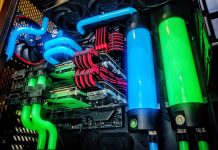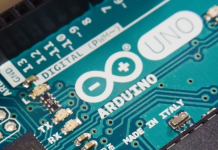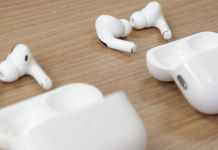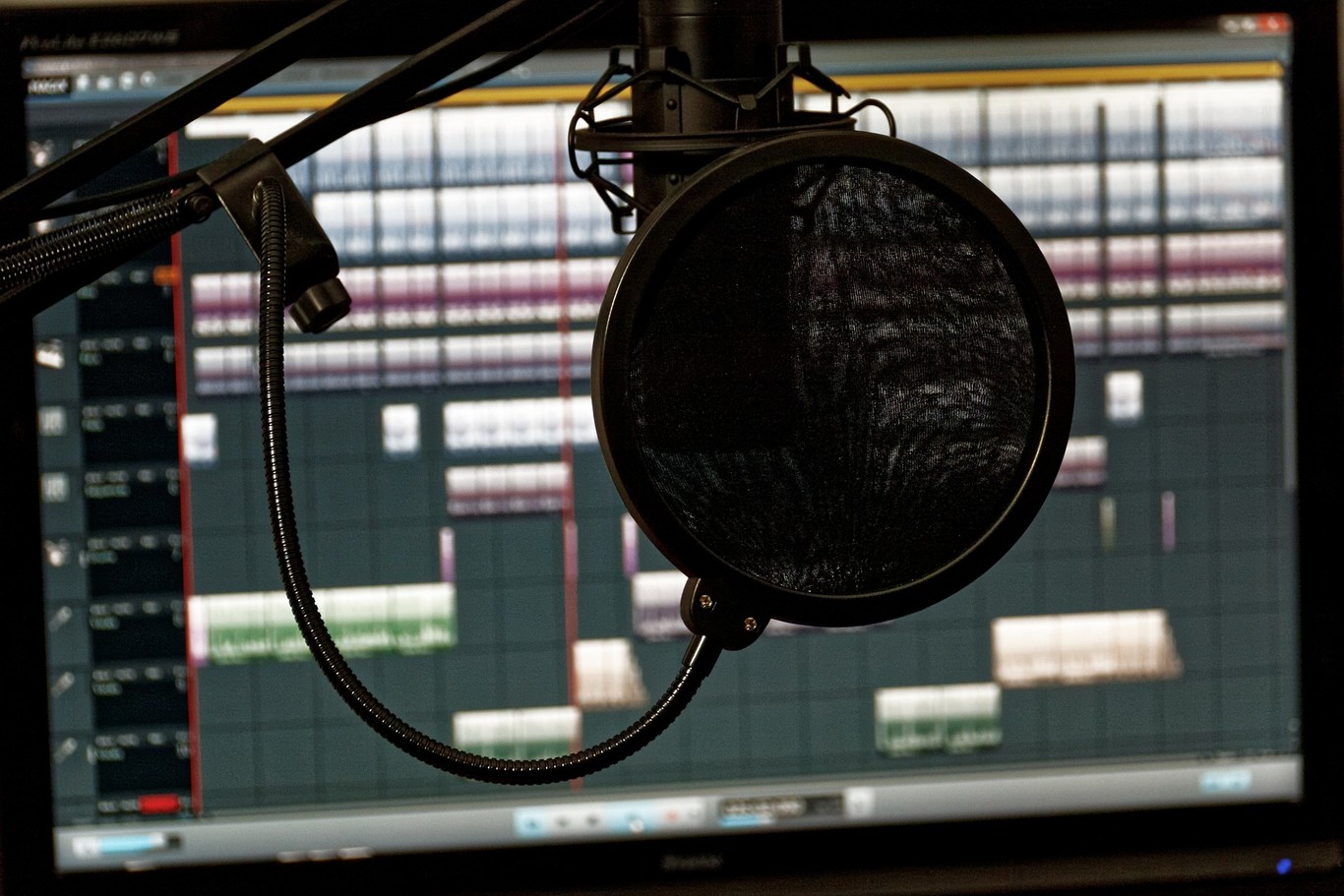
More and more among musicians it is very common to hear about the concept “home studio”. This is nothing more than setting up the recording studio (or a part of it, at least) in one’s own home. The idea is to gather a series of basic elements to start making home recordings, with which, as long as the right thing is chosen, we can do more than build the framework of a song.
Depending on the elements that we get hold of, we can have a more or less powerful team that will determine, to a large extent, what kind of tasks we can face. Have you ever thought about setting up your home studio? Well then keep reading, because we are going to give you a series of keys to know what you need.
First of all, we would like to make it clear that we are going to present you with three options on which to start working: entry-level, mid-range, and high-end. What we are not going to do is go into excessively professional options, after all, what is intended is to offer a small guide on what equipment can be found, how much it can cost, and where it can be obtained.
Ok, but what is a home studio for?
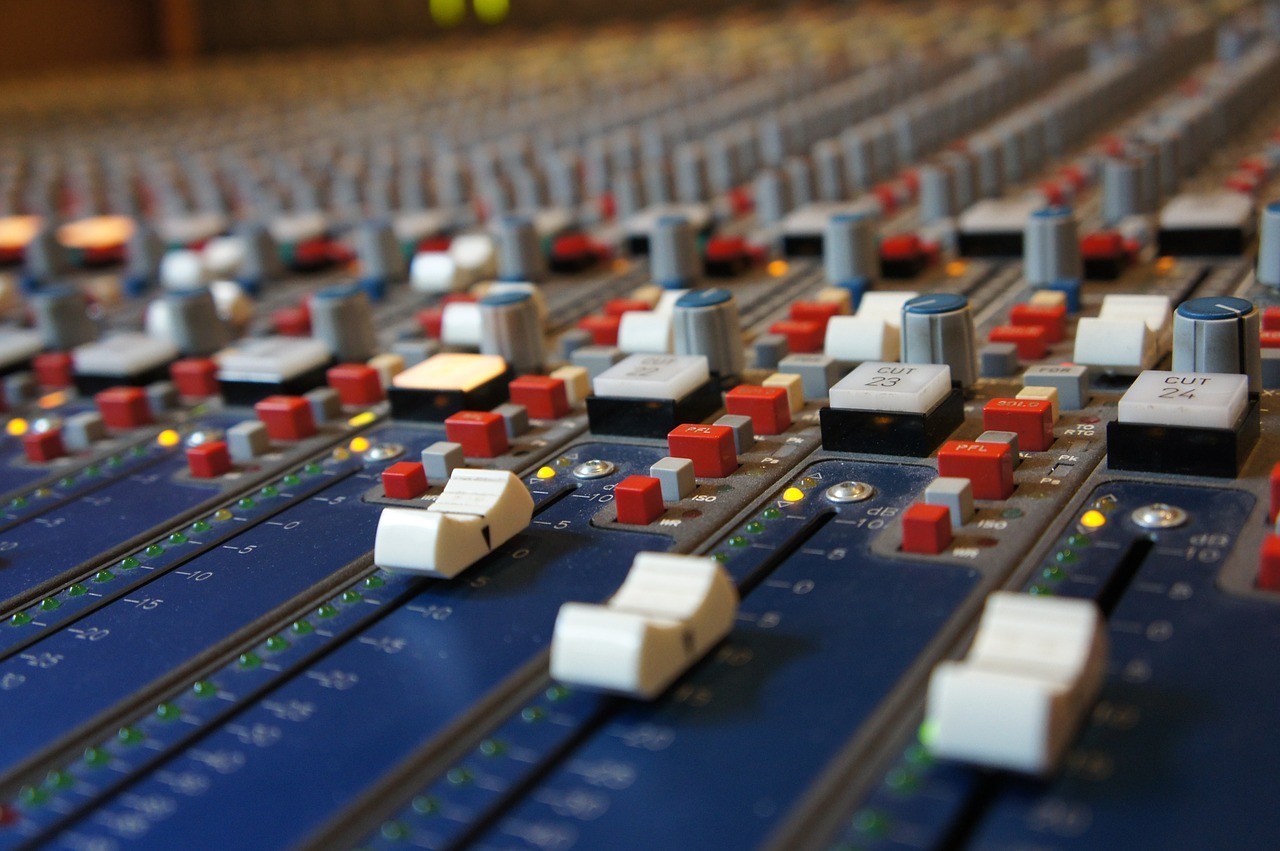
A home studio can serve different purposes. It depends on the person who is going to use it, on the experience they have working with audio, on what they want it for… There are as many different reasons as there are people. Each one has their reasons and knows their reasons, they do not need to justify them.
One possible use could be to record your demos. This may be because you have a project in which you are the group, or because you like to bring to your rehearsal room a more or less presentable idea of your songs: something that has a face and eyes, that is not just a loose riff or a loose piece of music
You can also use it as a way to save money if you’re good at sound. Recording studio hours are not cheap in most cases, and for good reason: the technician has to eat, and professional equipment is not cheap and must be maintained. You can use it to record guitars, bass, vocals, keyboards, or whatever you can think of, and go to a professional studio just to record drums if you need to.
Now, the result will never be the same as if you use a professional studio for everything. I feel obliged to notify you. That being said, let’s get to the important thing: What do you need to have a home studio?
The first step: an audio-specific computer
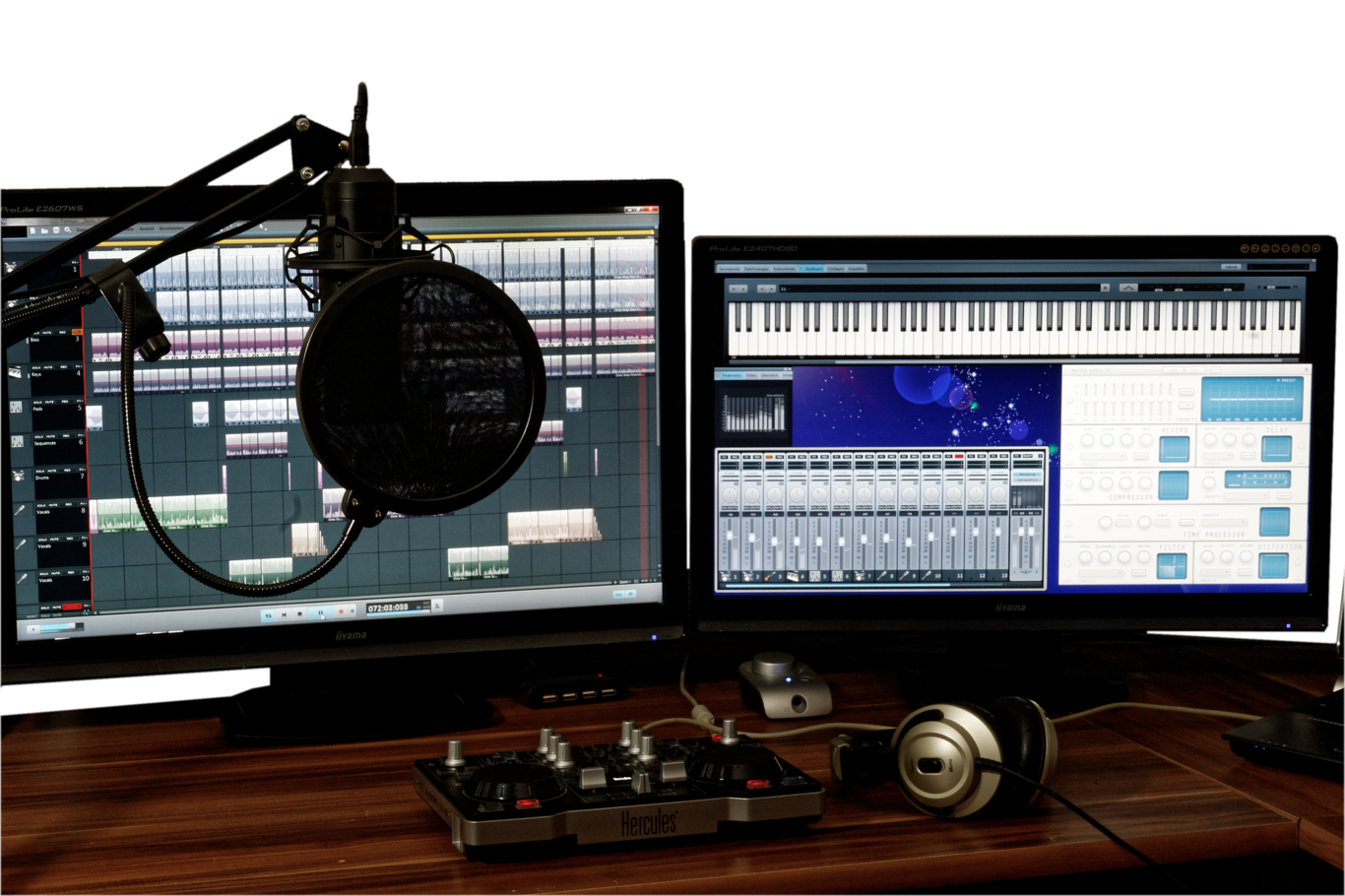
Before thinking about buying microphones or audio interfaces, the most important thing is to have a computer, since it will be the support on which we will record all our audio tracks. It has to be able to work with a digital audio workstation or DAW, although we’ll talk about these programs later. Let’s go first with the machines that you can configure to work with solvency with audio tracks.
One thing that we must take into account when working with audio is to have a good processor and a good amount of RAM, for two reasons:
- The DAW will pull a lot of processors when working, so it is important that it can work smoothly and without clipping. Doing so may interrupt recording periodically, or make mixing impossible.
- The plugins with which we will add effects and process the signal need a good amount of RAM to work, so we have set a minimum of 8 GB.
Keep in mind that the prices that we will give below only cover the PC, not monitors or peripherals. I prefer to leave that to your discretion as a user. The pieces that we will list next can be obtained in PCComponentes.
entry-level computer
|
COMPONENT |
MODEL |
PRICE (WITH VAT) |
|---|---|---|
|
pc case |
AeroCool GT Advance USB 3.0 Edition Black |
€36 |
|
motherboard |
Gigabyte GA-F2A88XM-DS2 |
€55 |
|
Processor |
AMD A10-7700K 3.4Ghz |
€89 |
|
RAM |
2x Kingston ValueRAM DDR3 1600 PC3-12800 4GB CL11 |
€66 |
|
system hard drive |
Avexir E100 SSD 120GB SATA3 |
€48 |
|
data hard drive |
Toshiba DT01ACA050 500GB 7200 SATA 3 |
€42.95 |
|
Power supply |
Tacens APII500 Power Supply 500W |
€15.25 |
|
TOTAL |
352.20 |
In the case of the entry-level PC, it is worth bearing in mind that we have left out more “unnecessary” elements such as the dedicated graphics card. We have raised this machine as the basics to work with audio at home, so we have dedicated ourselves to making a budget that is as tight as possible.
We have designed this equipment for those who want to record their demos at home or work on somewhat more elaborate composition tasks. This equipment is not designed to make recordings with a certain luster, although if you have also thought about uploading your videos to YouTube it is a good option to have something presentable.
mid-range computer
|
COMPONENT |
MODEL |
PRICE |
|---|---|---|
|
pc case |
AeroCool GT Advance USB 3.0 Edition Black |
€36 |
|
motherboard |
MSI B150 PC MATE |
€93 |
|
Processor |
Intel Core i5-7600K 3.8GHz |
€259 |
|
RAM |
Corsair Vengeance LPX DDR4 2133 PC4-17000 16GB 2x8GB C13 |
€132 |
|
dedicated graphics card |
Gigabyte GeForce GTX 750 Ti OC Windforce 2GB GDDR5 |
€126 |
|
system hard drive |
Corsair Force Series LE 240GB SSD |
€92.95 |
|
data hard drive |
Toshiba DT01ACA200 2TB SATA3 64MB |
€69 |
|
Power supply |
Corsair VS 650W 80 Plus |
€59.65 |
|
TOTAL |
€867.60 |
As you can see, the leap in terms of money (although also in benefits) is quite large. We are talking about equipment already destined for semi-professional recordings and mixing. This PC is not only designed for those who want to record their demos but also for those who want to start entering the world of recording with the idea of leaping to something else.
In the case of this PC, you may have noticed that we have already included a dedicated graphics card. The reason is very simple: from this level on it is advisable to use two monitors to work with a DAW: the audio editor will go on one, and the virtual mixing console on the other. This graphics card allows you to do it, even connect two monitors via HDMI if you have the possibility.
Working with two monitors it is possible to have these two workspaces (the audio editor and the virtual mixing desk) separated, with which you will obtain a more efficient workflow without at any time bothering each other, or bothering you. you.
high-end computer
|
COMPONENT |
MODEL |
PRICE |
|---|---|---|
|
pc case |
Antec Performance One P280 USB 3.0 |
€122 |
|
motherboard |
Gigabyte GA-Z170-Gaming K3 |
€135 |
|
Processor |
Intel Core I7-7700K 4.2GHz |
€369 |
|
RAM |
Corsair Vengeance LPX DDR4 3000 PC4-19200 32GB 2x16GB CL15 |
€268 |
|
dedicated graphics card |
Gigabyte GeForce GTX 750 Ti OC Windforce 2GB GDDR5 |
€126 |
|
system hard drive |
Corsair Force Series LE 240GB SSD |
€92.95 |
|
data hard drive |
Toshiba X300 3.5″ 4TB SATA III |
€139 |
|
Power supply |
Corsair RM750i 750W 80 Plus Gold Modular |
€145 |
|
TOTAL |
€1,396.95 |
When dealing with this high-end PC, you will see that there are components that are maintained compared to the mid-range PC (such as the graphics card or the system hard drive), but otherwise, the rest of the parts offer much better features. to any of the others that we have mentioned: both its processing capacity, as well as its ability to absorb plugins in RAM while we work on a mix, are beyond any doubt.
It is the best option if you are willing to scratch your pocket, Of course, you also have to think that equipment like this in a home studio makes sense for professional musicians who are looking for guarantees when recording at home. It will never be like a professional studio, but with a machine of these characteristics we already have something that, in theory, will allow us to work at a high level and achieve recordings and mixes with certain quality guarantees.
Audio interfaces: What you should look for to choose one
In this section, we are going to focus again on these three ranges, offering a different solution for each one. We are not going to detail all the existing ones, but we are going to offer a few solutions that can give you a very good service depending on the type of price range in which you find yourself. All that we will offer you can be found at Thomann.
Entry-level interfaces
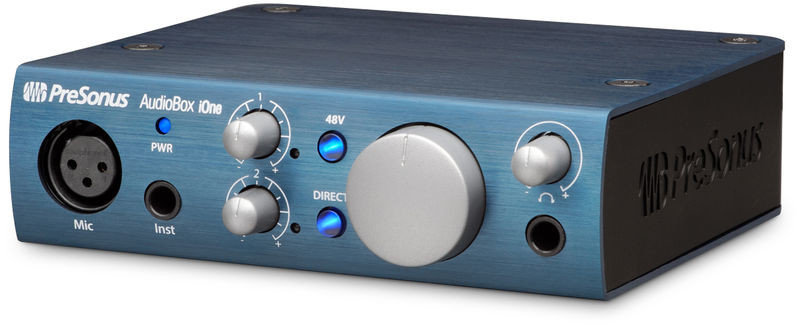
The first one we are going to cover is the Presonus AudioBox iOne. It is a very basic interface: You have an XLR input to connect a microphone and a jack to connect a guitar, bass, or keyboard via line. It connects to the computer via USB and has two outputs on the back so that the audio that we are recording can be sent through two specific speakers for studio work. It is the most complete option for basic home studios since it also has phantom power to be able to use condenser microphones with it. It cost 98 euros.
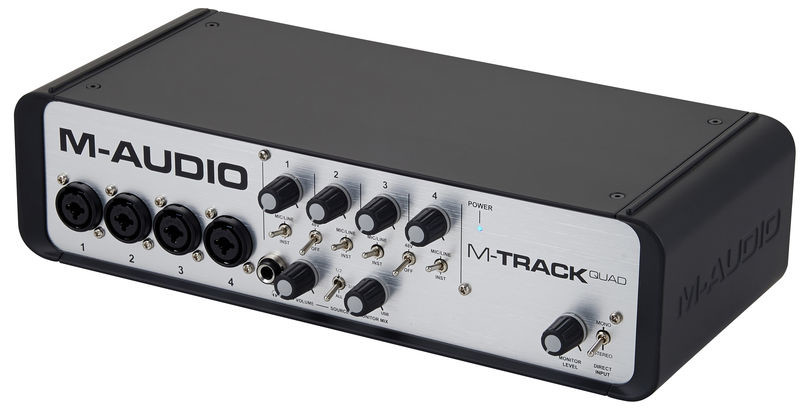
The second option we offer you is the M-Audio M-Track Quad. Within the simple interfaces, it is one of the ones that offer the most benefits when setting up a basic home studio, but with certain guarantees. Its features include four combined XLR and jack channels, which allow us to switch between microphone and line inputs independently.
It is also connected to the computer via USB and, as a fundamental difference concerning the previous one, it allows you to connect instruments via MIDI, in addition to also having phantom power. It also allows sound to be sent through flat response speakers through specific outputs located on its rear panel. It can be purchased for 248 euros.
Mid-range interfaces

When dealing with these types of interfaces, let’s focus again on two interfaces that are worth trying. On the one hand, we have the Presonus AudioBox 1818VSL. This interface has eight input channels with independently adjustable volumes, phantom power, the possibility of connecting flat response speakers, MIDI, and USB connectivity.
In addition to the speaker outputs, it has eight more outputs that are independent, something that can come in handy if we are working with an external effect. You can get it for 369 euros .

In second place we have the Steinberg UR824, the responsibility of the same manufacturer that is in charge of developing the famous DAW Cubase. It has the same features as the previous one, with the difference that it allows you to connect two sets of headphones to the device and allows better control of each channel. It costs 689 euros.
High-end interfaces
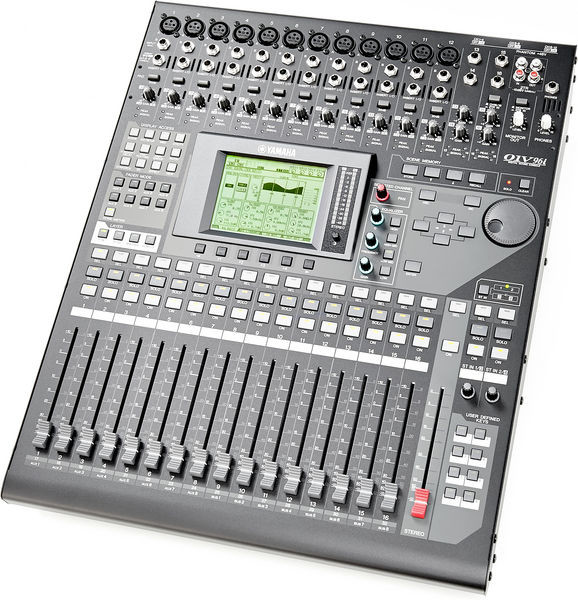
Since we are talking about a black-leg computer, here we are also going to talk about one (yes, only one) black-leg interface. We refer to a small wonder-made compact table, the Yamaha 01V96i. In the previous interfaces that we mentioned, all the processing had to be done through the recording program, but thanks to the motorized faders of this console and its support for DAW, you will be able to act with it directly in the software.
In total, it has 40 mixing channels and 24 input channels. If you are thinking of using it for live sound, go ahead, because you have space to do it. It incorporates everything that we have previously mentioned (MIDI connectors included), but multiplied by 10.
If what you are looking for is a way to record, mix, and get a great sound with good guarantees, this console is what you are looking for. It has a very wide range of options to work with (with any digital console I recommend spending several hours reading the manual and trying everything thoroughly) and is, above all, very versatile. You can buy it for 1,990 euros.
Listening monitors: a solution for all budgets
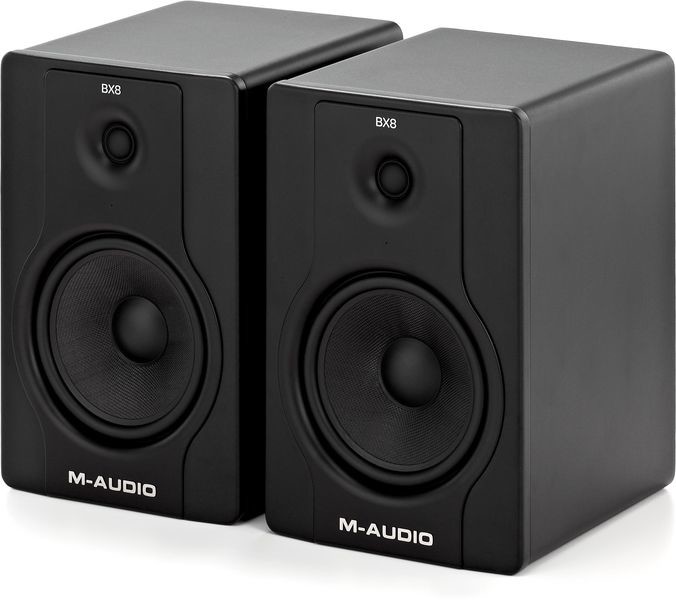
So far we have offered three product options, one for each range, but since this is about setting up a home studio, we are going to opt for a specific solution that can suit all three budgets. We are referring to the M-Audio BX8 D2, which is of a good size, delivers 130 real watts, has an eight-inch woofer, has a great dynamic response, and, best of all: they are sold in pairs.
Among the listening monitors (or flat response speakers) it is common to find unit prices, but in the case of these, what we have is a very well-matched pair for only 298 euros. The dynamic response they offer is really good, the sound is clear and crystalline, and their power is enough to listen at a medium distance without losing definition.
These are the monitors I have in my studio. I already have several recordings and mixes with them, and I only have good words. My experience with them has put me in front of some speakers that are easy to assemble and configure (turn up the volume control that you will find on the back and that’s it), that weigh a little (about 10 kilos each, they are covered with a frame of wood) and they sound damn good. Both for home studios and for new recording studios that are starting, they are a great option.
Microphones: Observe industry standards
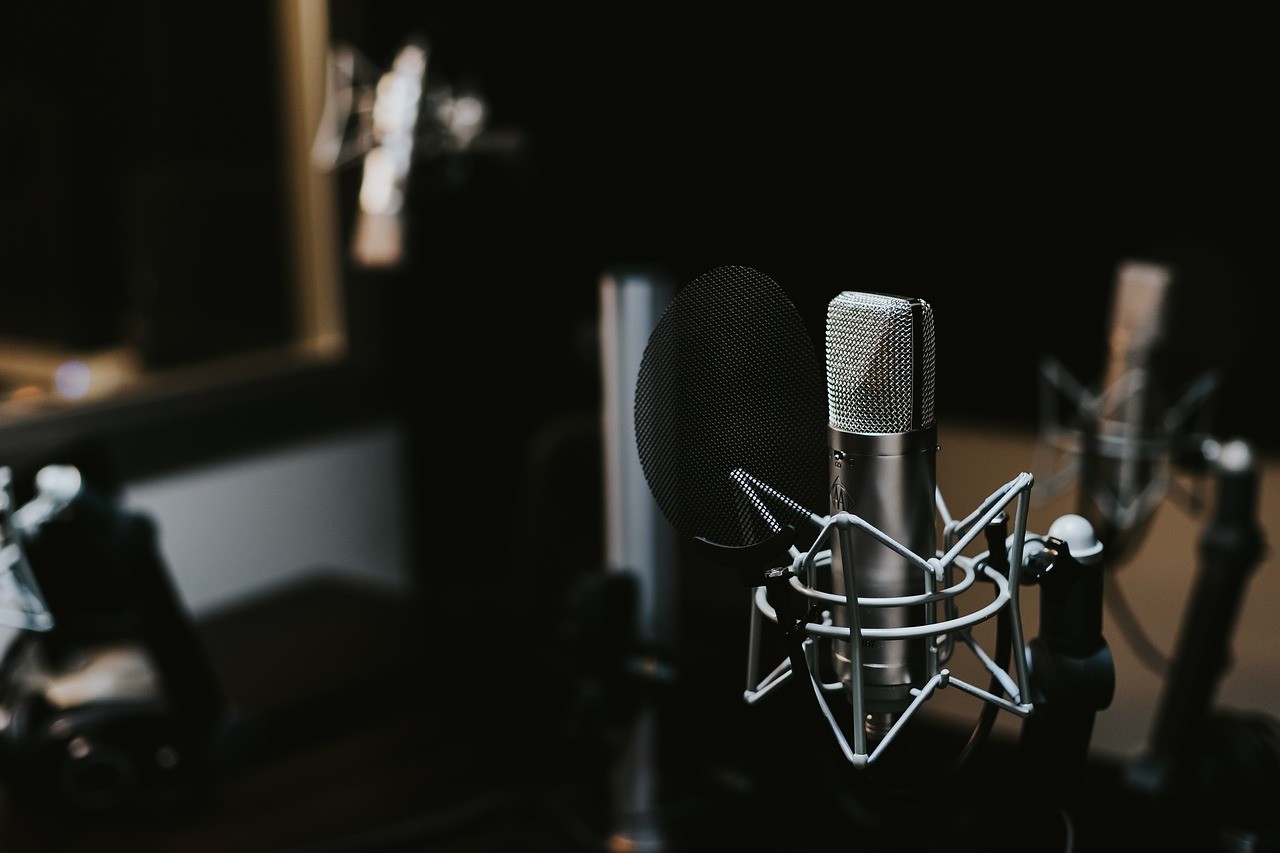
I must admit that, after spending a lot of time considering models, brands, and manufacturers for other parts of my studio, when it came to microphones, I was very clear about what I wanted. Regardless of what I may recommend here when it comes to miking, I encourage you to stick with what you find to work, at least initially.
It is about diving looking for devices that are almost a standard in the world of recording. That’s what I’m going to stick to when talking about sound pickup devices: things that I know work, that I’ve tried and know work well. And all that without going crazy with the price. We would all love to have a Neumann U87 Ai for recording vocals (at least for me), but not everyone can afford what it costs.
For this reason, in this section, we are going to limit ourselves to microphones for voices and instruments, although perhaps in the section on sound conditioning and an amplifier, we can make some observations that I will detail later. For now, I will comment on the devices that I have had the opportunity to test and that can give some hint of where to start to build a good set of microphones for the home studio. Let’s go first with the microphone of voices:
- Rode NT1-A – There are several reasons to recommend it for low- and mid-budget home studios. This condenser mic is fantastic for recording vocals, the pickup is amazing and the distance cancellation works great. It usually comes in a pack with its spider (the part that holds it to the mic stand) and a pop filter (used to reduce the impact that certain letters have on the mic diaphragm when pronounced). In addition, it costs 179 euros.
- Shure Beta 58 A: Shure makes some fantastic gadgets. Within the family of dynamic microphones, the Beta 58 A has a great response with vocals and can be used both in the studio and live. It comes to improve a classic, the Shure SM58. It is capable of capturing all the subtleties of the voice, and the response to dynamics is brutal. You can get it for 175 euros.
- Sennheiser MK4: We went up a bit in the price range to meet another great in the industry such as Sennheiser. Like most of the ones we’ll discuss at this point, the signal-to-noise ratio of this MK4 is tremendously good, ensuring incredibly clear recordings. Its pick-up capacity is impressive, to the point that, if you are going to use it in an environment that is not properly prepared, it may pick up noise from outside. It is for sale for 277 euros.
- Shure KSM42 SG: We close this review with another wonder created by Shure. If you can afford to buy something that starts to be on the high end, then it’s worth it. The clarity you get with this mic is practically crystal clear, vocals sound very full after going through it, and it’s a delight to use for vocal recordings. It costs 699 euros.
In this list that you just read there are three condenser microphones and one dynamic one. Which one should you stay with? First of all, a no-brainer: with the one you can afford. Second, I prefer condensers for recording vocals. The sound that is achieved is much closer, clearer, and warmer, but that is already a mere matter of taste. If you like more what the Shure Beta 58 A proposes, don’t hesitate to use it.
Now it’s time to talk about microphones for instruments. If you go to music distribution pages like the aforementioned Thomann, you will find a vast range of options to choose from, so let me simplify things a bit:
- Shure SM57 – This is another classic. I have been using it for a long time when recording instruments, and I have had a very good experience with it. It is used to record anything: vocals, guitars, and basses from the amplifier, wind instruments, brass… It accepts large amounts of volume without blinking, it is robust and reliable to the maximum. You can get it for 109 euros.
- Sennheiser E 906 – Sennheiser’s E 906 is the best alternative to the SM57. It is somewhat more expensive, but it is also more versatile. When it comes to recording instruments it is one of the best options you will find and, like its rival from Shure, it is a robust and reliable microphone that can withstand whatever you throw at it. It costs 155 euros.
We return to the question from before: Which one should you keep? Here I will say it clearly: it is a mere matter of taste. The SM57 isn’t the absolute truth about the quintessential instrument mic, nor is the E 906 going to become the new standard overnight, much as it’s lauded. Both are complementary, both have things that the other does not, so the most interesting thing can be to use both at the same time if your budget allows it. If not, choose the one that you think will give you the best result.
Why do we only give these two options and not include drum mics? Well, first of all, because we are talking about setting up a home studio and, unless you have a 40-square-meter floor at your disposal that you can transform (and condition) as a control room and a recording room, you are not going to record drums at home Most homes offer limited space, so you have to play with it.
Recording software: DAWs and plugins to consider
We begin to enter muddy terrain. About DAWs, there is always a debate about which one is better. It is enough to take a look at websites specialized in sound and music production such as FutureMusic to verify it. The main question is, what are you going to use your home studio for? Are you going to use it to record real instruments, or are you going to produce electronic music?
The question may seem like a truism, but based on that, the user can be directed to one DAW or another. If, for example, you are going to produce electronic music, the standard option is Ableton Live. On the other hand, you can also use others like Reason and even sequence suites like Fruity Loops.
If what you want is to record real instruments, things get trickier. Pro Tools is the universally accepted standard in professional studios, but it costs a pretty penny and requires specific hardware (even more money) to work. Another possible option is Cubase, which has improved tremendously over the years and competes directly with Pro Tools. After this and continuing with the order of importance we have Reaper, which you can use without breaking the bank ad-infinitum (or buy a license for little money).
From my experience, I recommend using Reaper. I worked with Pro Tools at the time (while studying sound, mainly), but I don’t like its philosophy. I was also a Cubase user for a long time, I even tried Sonar by Cakewalk, but it was the DAW developed by the company Cockos that ended up winning me over. It has a somewhat steep learning curve (especially if you’re new to these games), but it’s worth it when you get hold of it. I even find that my productions sound better than with Cubase.
And what about plugins?
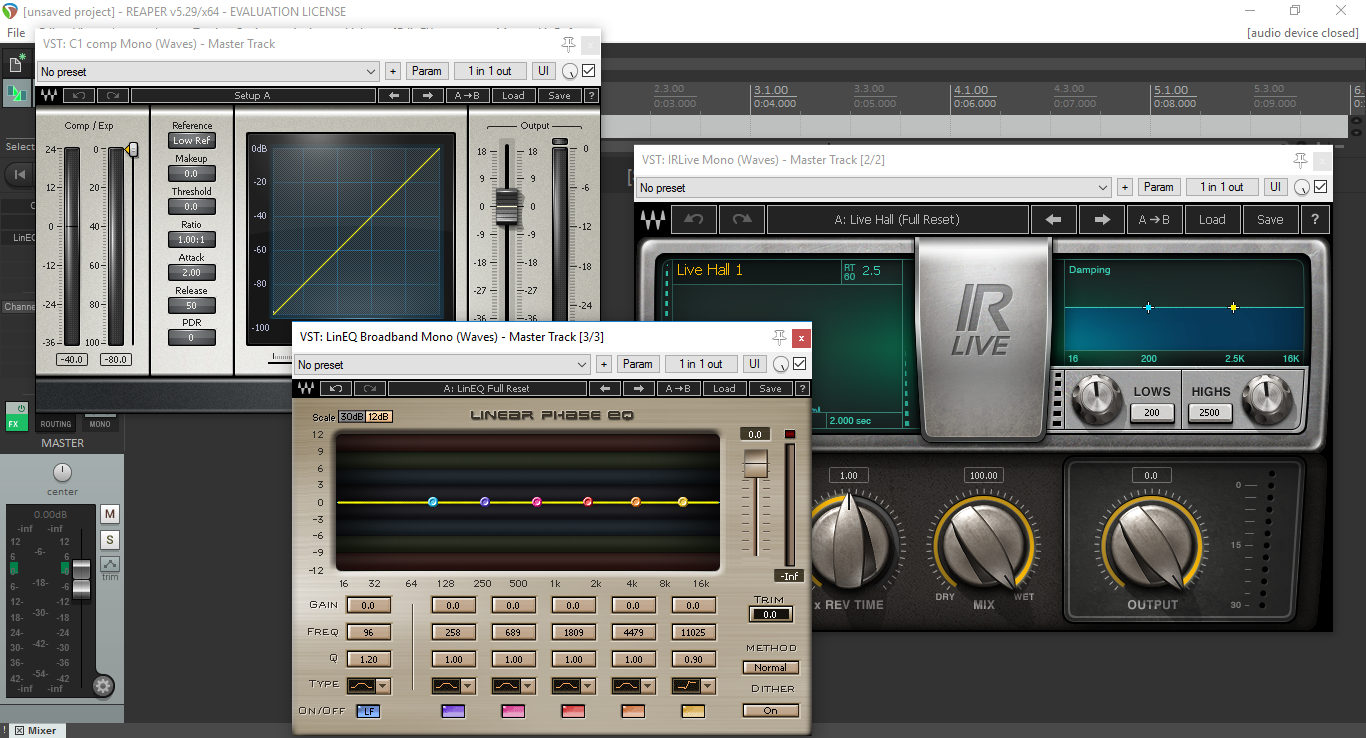
Plugins are what you’re going to use to shine up your recording: equalizers, compressors, reverbs, delays, noise gates, limiters, maximizers, distortion effects, vocal manipulation… The list is almost endless. There is a huge sea of these effects to use in a DAW, generally of the VST type, although there are also other kinds (such as RTAS or AAXnative).
Within these plugins, you can find free and paid options. Among the free options, you can find very good works, such as those that were published on the corporate blog of Landr, a company dedicated to creating mastering software. Among the payment options, one of the best you will find is the Waves package, but yes, be prepared to empty your pockets.
For your home studio, the free options can be more than enough, since they will help you to enter the world of mixing and try different effects and ways of signal processing that will be very helpful later on. Now, if you have the money and want to pay for an effects package for your DAW, go ahead.
At this point, I am forced to talk about guitar and bass modeling software. They’re also plugins like the ones we’ve already mentioned, but if you don’t have the space to be able to record a guitar or bass directly from the amp, it’s not a bad idea to test its capabilities. In some genres, such as metal, some people use them to get a thick and punchy sound.
I prefer the organic sound of the amp, but I also have two modeling plugins for guitar and bass, BIAS FX and Guitar Rig. Here is a demo of BIAS FX:
And here’s one from Guitar Rig :
I have worked with both and both have given me good results, although I like BIAS FX better. It’s just a matter of taste, yours may be the complete opposite of mine (you might even prefer Amplitube), but nothing is written about these topics and ultimately it’s up to you to decide what to use.
Do they have advantages over using a microphone? Yes. For starters, you should have less background noise in your signal, although if you go with the Shure SM57 or Sennheiser E 906 it should be almost imperceptible. What’s more, some of these modeling programs even allow you to decide which virtual microphone you are going to use, where you are going to place it, and even how far you are going to place it from the “amplifier”. Another great advantage is that it is ideal if you do not have much space. You just have to find the sound that best suits what you want, connect your guitar or bass to the interface, and start playing.
If you’ve made it this far, congratulations. You already have a general idea about what you need to set up your home studio. From here, the decisions you make are all up to you. What I have tried with this article is to offer a series of starting points and elements to take into account, but you will have the last word.

Sharlene Meriel is an avid gamer with a knack for technology. He has been writing about the latest technologies for the past 5 years. His contribution in technology journalism has been noteworthy. He is also a day trader with interest in the Forex market.


